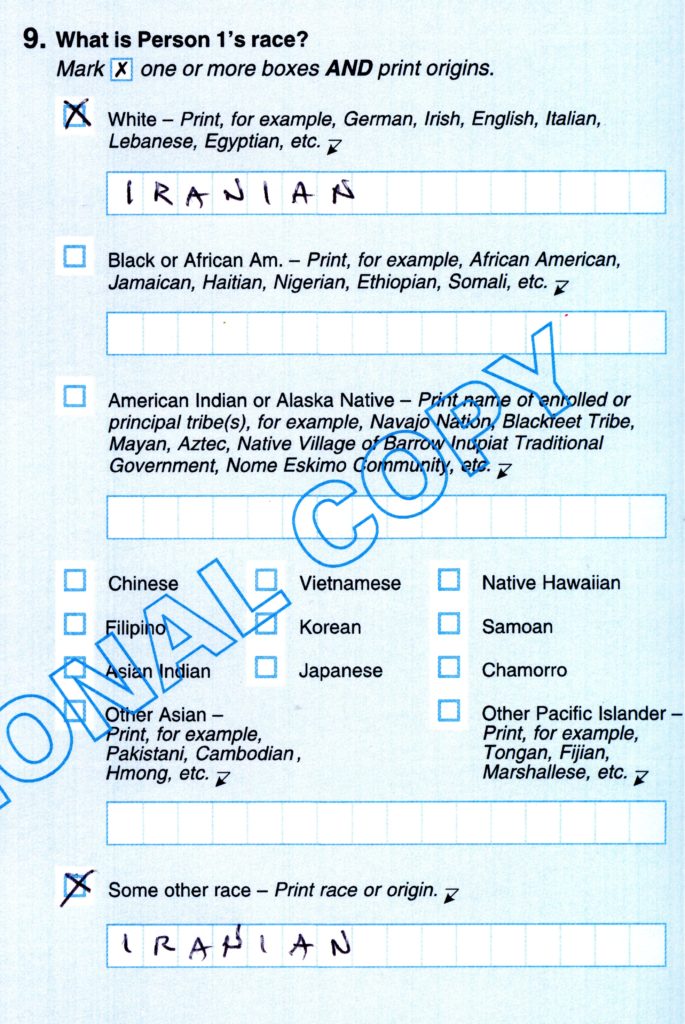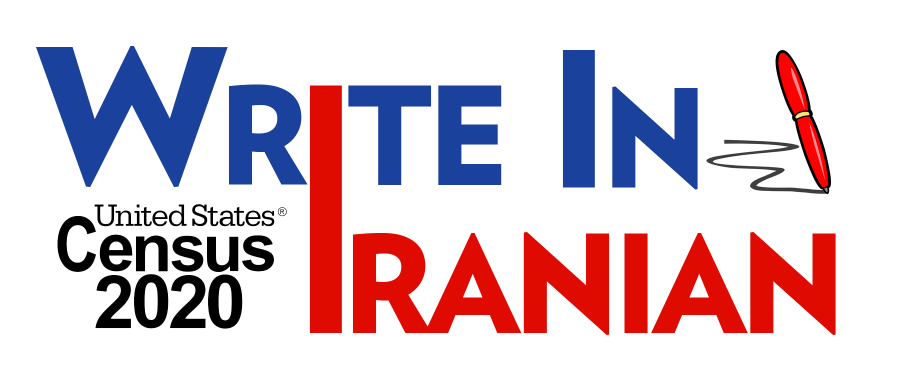February 28, 2020

The Public Affairs Alliance of Iranian Americans (PAAIA) is urging all Iranians in the US to identify their race as “Iranian” next month when they fill in their 2020 Census forms.

The Census form will be mailed to homes all across the country in mid-March and aims to count everyone in the country as of April 1—including non-citizens, such as foreign students and even visitors from abroad. Question 9 on the form asks for the race of the head of the household. On succeeding pages, Question 7 asks the same question for other members of the household.
PAAIA is asking Iranians to write-in “Iranian” either after checking themselves as “White” or “Some other race.” The accompanying picture shows both checked, but only one needs to be checked.
In the 2010 Census, 200,000 people identified themselves as Iranian by checking the box for “Other” on the race question and writing in Iranian. But many simply checked “White,” and there was no further option under “White” to indicate heritage. The 2020 Census, for the first time, allows a write-in option under every race category for people to write in a specific nationality.
PAAIA has been running a campaign to convince Iranians to write-in “Iranian” to get a better count. Most Iranian groups in the US believe there are far more than 200,000 Iranians in the United States, with many arguing there are a million.
The Census question is simply asking people to write in what they identify as being. There is no scientific definition of Iranian. Someone who has an Iranian and a German parent can write in “Iranian” or “German” or “Iranian and German”—or nothing at all.
The Census is mandated by the US Constitution and has been carried out every 10 years since 1790.
There are three main uses to which the Census is put.
First, the Constitution requires the Census to determine how many members of the House of Representatives each state will be allotted. The states then use the Census data to draw the boundaries of each congressional district so they have equal populations.
Second, laws passed by Congress use the Census to determine what proportion of $675 billion in federal funds are distributed to each state, county and city for many programs. An undercount means less money for that community.
Third, academic and other researchers use the results to study population groups and demographic trends.
Some Iranians in the US are suspected of ignoring the Census forms for fear they will be used to pinpoint Iranians in an effort to deport them. The law, however, forbids the Census Bureau from giving out data on specific individuals to anyone, including law enforcement.
In 1942, after the attack on Pearl Harbor, the US Army sought Census data on Japanese residents in order to round them up and intern them. The Census Bureau refused to hand over the information and its refusal was upheld by the courts.
Most households will get the Census short form, shown in the accompanying illustration. But about one in six households will get a much larger form asking 46 additional questions.


















